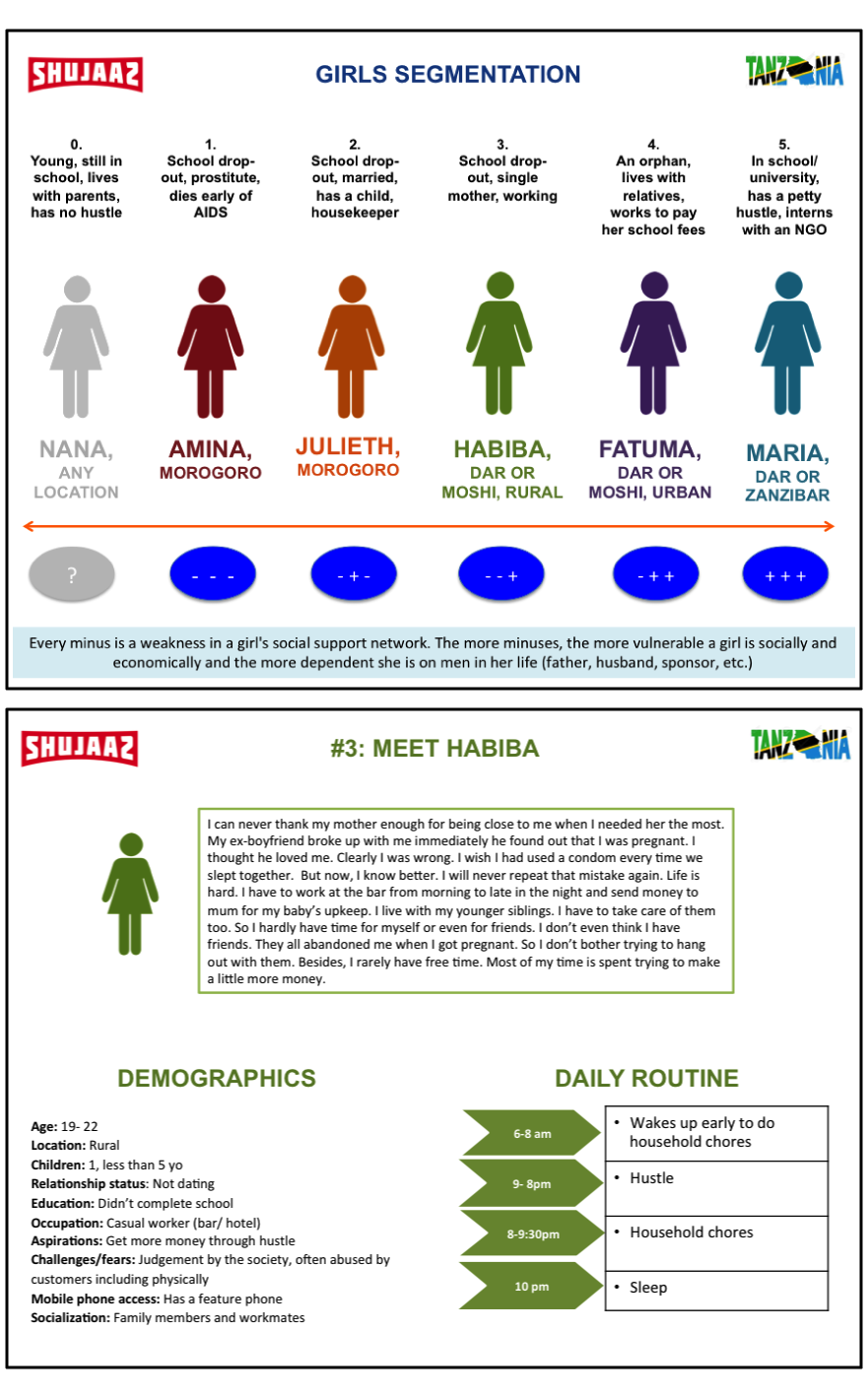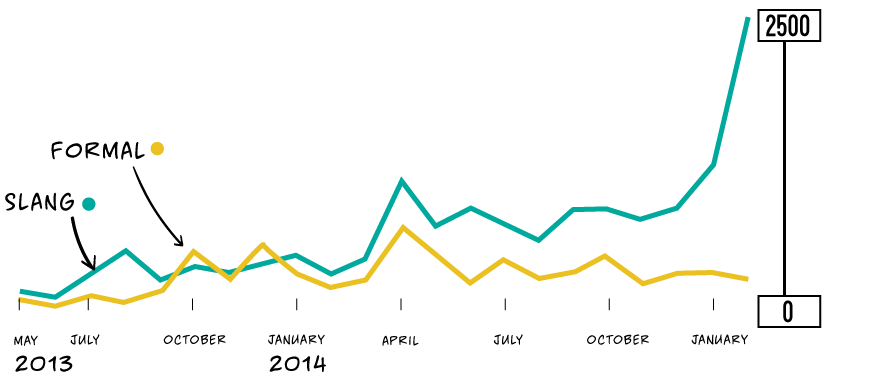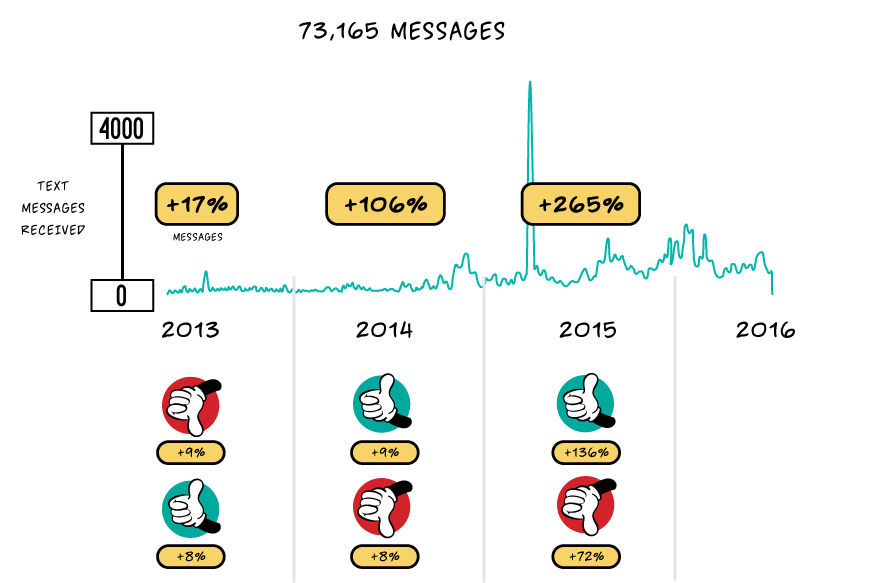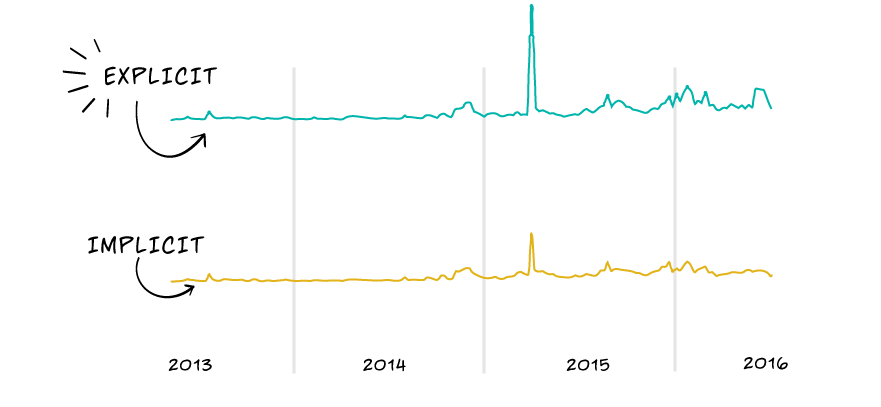Ground Truth
All Shujaaz media activities are grounded in rigorous qualitative and quantitative research. In fact, research is not a point in time at Well Told Story but is instead an integral part of everything we do: feedback and media content continually influence each other in a virtuous cycle that helps us grow increasingly effective.
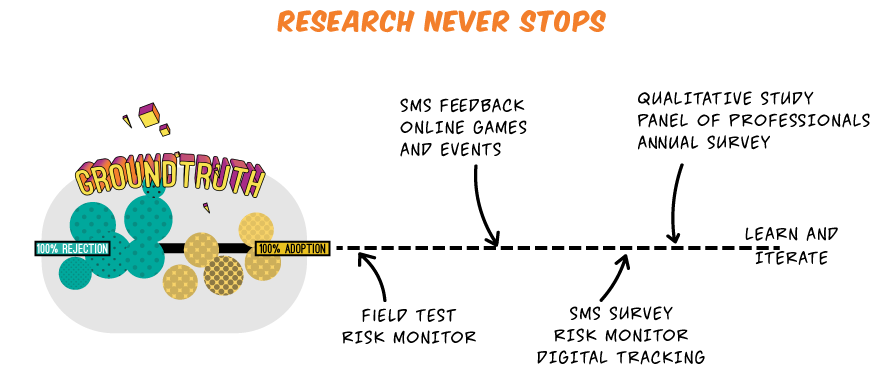
Our research activities include our GroundTruth formative qualitative studies, designed to help us view the world through the eyes of our audiences. Using in-depth field work, observations, diaries and focus-group discussions, these studies aim to gain a better understanding of the lives of Kenyan and Tanzanian youth, including insights into:
- Their daily routines.
- Their social lives.
- Their interests, ideas, thoughts and aspirations.
- The challenges they face.
- Their media engagement.
- Attitudes towards priority topics (reproductive health, financial fitness, unemployment, governance, etc.)
- Information gaps and other needs that can be filled by Shujaaz.
We aim to engage with the four key-informant groups around a given issue: the core audience (the youth), “finger waggers” and gatekeepers (people trying to set the agenda for the core audience, typically parents and teachers), positive deviants (young people who already have the attitudes and behaviours we wish to promote), and experts.
Recent GroundTruth research included a look at the lifestyle, challenges, aspirations and media usage of Kenyan girls, an analysis of Kenyan boys’ attitudes toward girls, relationships, sex and contraception, and a segmentation of Tanzanian youth from which an excerpt is shown below.
Rejection Scale and Segmentation
Two conceptual tools are particularly key to generating insights from GroundTruth research: segmentation and the Rejection Scale.
Audience segmentation is a basic practice in marketing and in communications. Experts recommend that you “segment until you can’t segment anymore”—the smaller the audience, the more targeted and effective you will be. All the Shujaaz fictional characters represent different youth segments (male, female, rural, urban, middle class, subsistence, etc.)
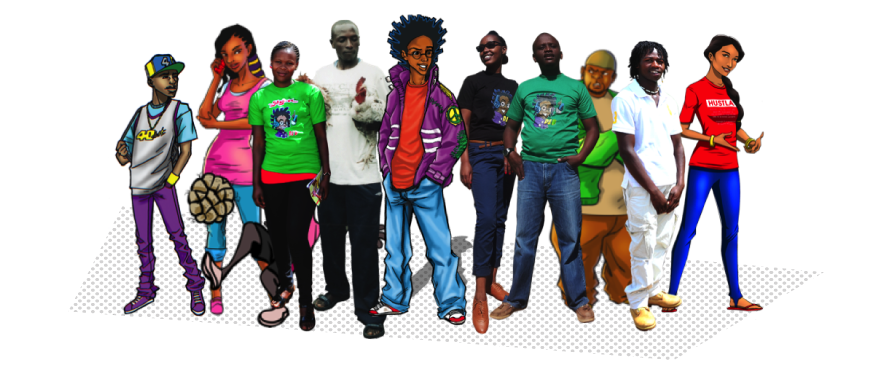
GroundTruth research helps us determine how to target particular segments, whether or not our existing targeting is effective, how different segments are engaging with Shujaaz platforms, what motivates their engagement and how we can scale up our positive impact on their lives.
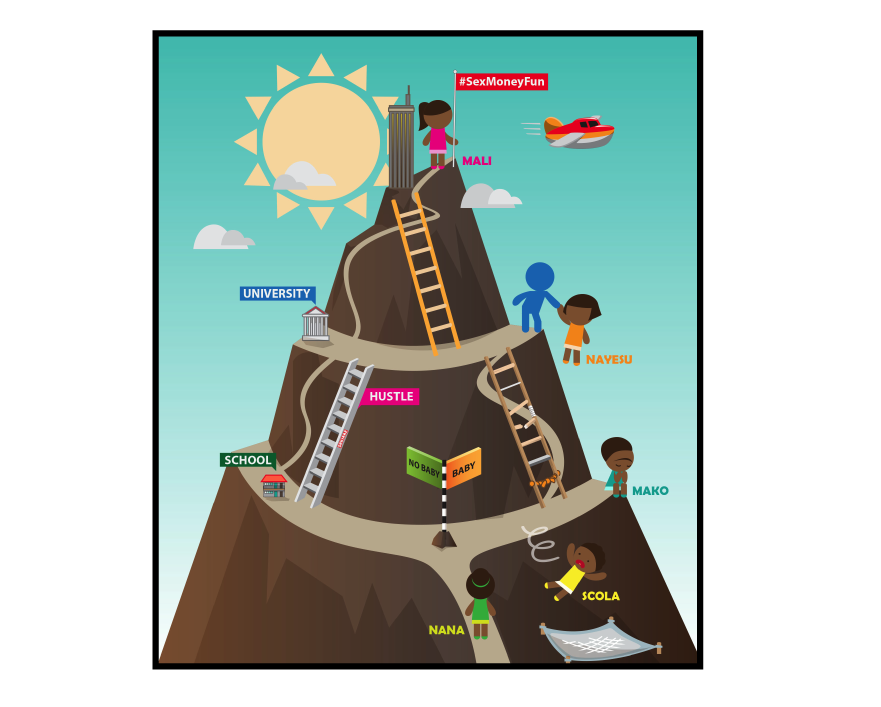
Segmentation becomes particularly exciting for us when it’s done by members of the audience themselves. Young people are brilliant at describing the different groups among their peers and the different views that make up their world. When they do so, they allow us to create strategies and stories that speak with far greater authenticity than anything we could imagine ourselves. For example, audience viewpoints were the basis for this typology of young women’s relationship types.
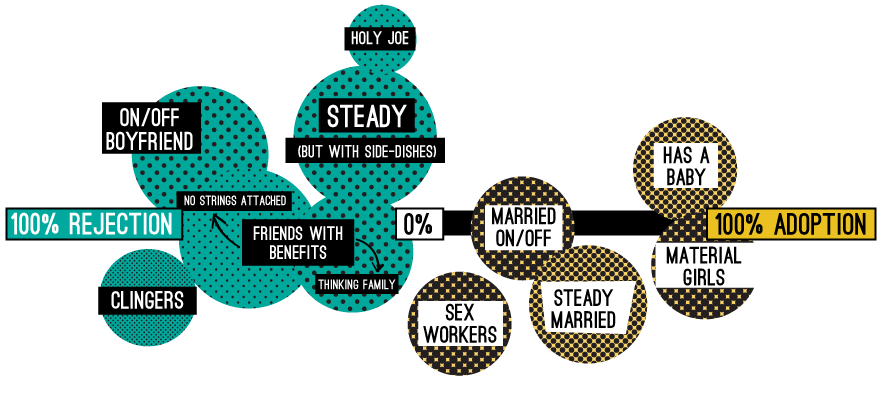
We also need to know where our audience members stand on an issue before we can decide what will motivate them to take action: Do they need knowledge? Do they have the knowledge but don’t care? Do they have the knowledge but don’t believe it? For example, encouraging young people to manage their fertility with contraceptives is often characterized as a problem of knowledge deficit. (“If only young people understood all the benefits of contraceptives, they would surely use them!”)
However, our GroundTruth research has found that young Kenyans are not facing a knowledge deficit. Instead, they’re actively rejecting contraceptives for reasons of their own, including side effects (experienced firsthand or described by friends), negative experiences with access points such as medical clinics, or the belief that contraceptives are suitable for other people in other life situations (e.g. married or in a family setting), not themselves.

Shujaaz is working to understand the rejection space, and to address the exact arguments young people use to inform their rejection. We’ve developed the Rejection Scale as a way to visualize the persuasion journey youth need to take before important changes can happen.
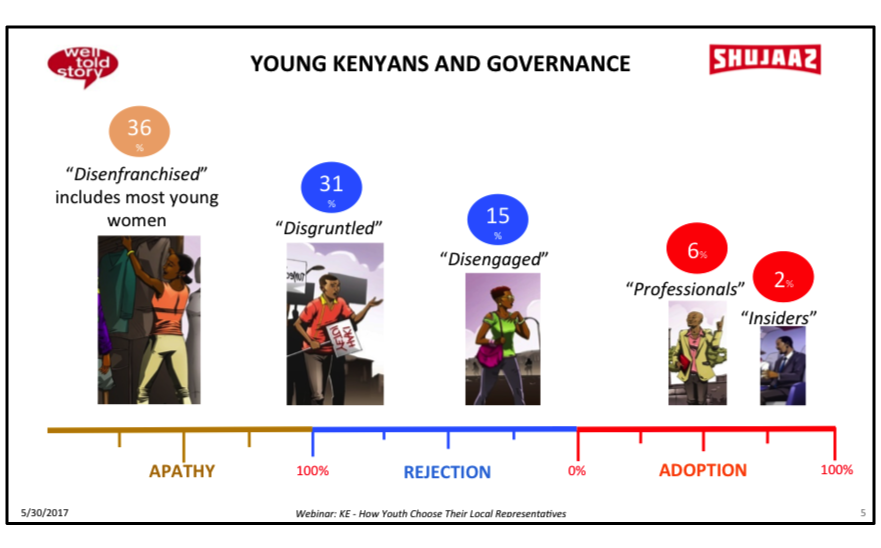
Big Data
Shujaaz regularly engages its audience in the digital space (e.g. SMS, Facebook, Twitter, WhatsApp) in a collective discussion of important issues—an objective essential to our Theory of Change. Since 2014, we’ve been working with Cambridge University’s Africa’s Voices Foundation, combining machine learning and human analysis to delve into the hundreds of thousands of SMS messages and social-media interactions that Shujaaz receives from fans. Many of the messages are in “Sheng,” an urban youth slang that combines Swahili, English and other local languages.
In collaboration with Africa’s Voices Foundation researchers, we analyzed the tens of thousands of messages that dealt with one of Shujaaz’s themes, contraception. One of the first insights to arise was that conversations in Sheng (which many fans associate with peers and informal settings) were more vibrant and deep than those in more formal English, associated with the adult world. We incorporated more slang into our comics and social media, which boosted engagement in the conversation starting in October 2014.
For another analysis, we labelled the contraceptive-themed text messages according to their positive or negative sentiment. We then built algorithms that coded messages automatically using a machine-learning approach. A crowdsourcing web-app (pictured) was used to help code messages from Shujaaz’s SMS platform by Sheng speakers.
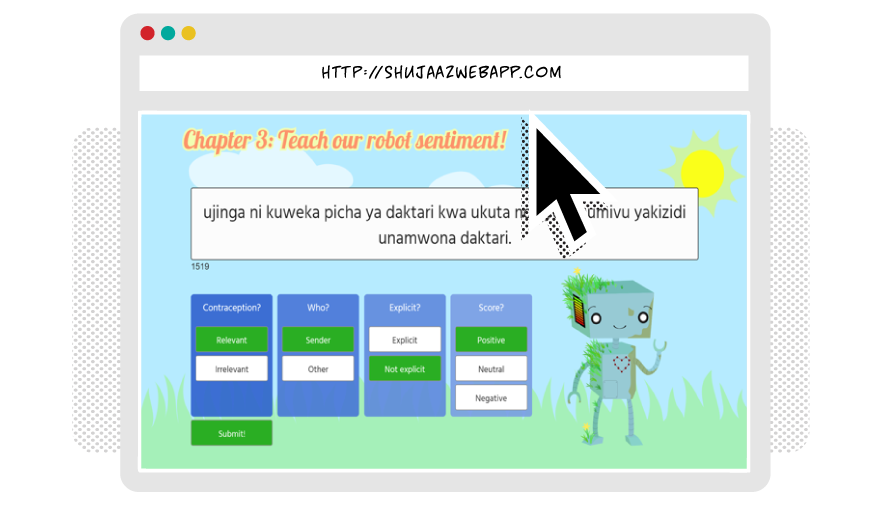
The data suggested that negative attitudes towards contraceptives (rejection space) are gradually decreasing, making space for more positive attitudes to emerge.
We also recorded an increase in messages that deal explicitly with contraceptive concerns (e.g. “I have a grlfrd, she hates condoms but I want to use them, what can I do?”) as opposed to messages that approach the topic more implicitly (e.g. “Is a guy supposed to carry condoms?”) This finding suggests that Shujaaz’s audience is growing more comfortable talking about contraceptives and that these conversations are being normalized.
During the months before and after the 2017 Kenyan presidential election, we collaborated with Africa’s Voices Foundation on an additional study that aimed to understand:
- Kenyan youth’s knowledge and perceptions on issues related to governance.
- The dynamics of Kenyan youth conversations on social media.
The study focused on conversations about governance on the Shujaaz Facebook page—as well as on selected Facebook pages frequented by Shujaaz fans. It gave us insights into the participating fan segments, the issues that affect them the most (e.g. corruption, unemployment), and audience reactions to Shujaaz media content and governance-related events in the country. The findings, as always, will inform our media content and communications strategies.
- Summary: “GroundTruth: A Summary of the Well Told Story (WTS) Approach to Assessing the ‘State of the Audience.’” July 25, 2017.
- Blog post: “Client Segmentation and Financial Inclusion.” April 25, 2017.
- Blog post “Well Told Story’s Rejection Scale Turns the Art of Persuasion into Science.” August 28, 2015.
- Report: “Using WhatsApp to Learn What’s Up.” July 26, 2017.
- Report: “#PesaPersonas: The Money Matters: Youth, Money and DFS: Findings and lessons from an action research project.” January 19, 2017.
- Report: “Tanzanian Youth Segmentation, Girls and Boys, Lifestyle, Challenges, Aspirations and Media.” July 2016.
- Report: “Kenyan Girls: Lifestyle, Challenges, Aspirations and Media.” March/April 2016.
- Report: “Kenyan Boys, Girls and Contraceptives (Part I).” September, 2016.
- Blog post: “‘I Don’t Even Know If I Care’: How Youth Segment Around County Governance in Kenya.” October 1, 2015.
- Webinar slides: “Kenya: How Youth Choose Their Local Representatives.” May 30, 2017.
- Blog post: “We Taught a Computer To Speak Sheng! Ground-Breaking Big Data Research with Cambridge University’s Africa’s Voices.” August 20, 2015.
- Report: “Insights from Africa’s Voices analysis of Sheng data.” January to July 2015.
- Overview: Digital Conversation Tracking and Analysis.
- Blog post: “Piecing Together the Big Data Puzzle.” April 14, 2016.
- Blog post: “Can We See New Norms Form? New tech means we can not only watch the process but also understand and influence it.” October 9, 2016.
- Blog post: “Election chat: the secrets of youth social media revealed.” August 7, 2017.

